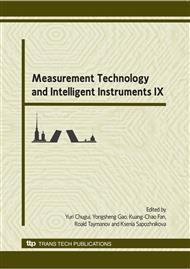p.571
p.575
p.580
p.584
p.589
p.594
p.598
p.603
p.611
Prediction of the Bilinear Stress-Strain Curve of Engineering Material by Nanoindentation Test
Abstract:
Instrumented indentation is widely used to probe the elastic and plastic properties of engineering materials. Finite Element Method (FEM) has been widely used for numerical simulation of indentation tests on bulk and film material in order to analyze its deformation response. This study proposed an improved technique to determine the stress-strain curve of bulk material. FEM in conjunction with an abductive network is used to predict the stress-strain relationship of bilinear elastic-plastic material from the nanoindentation test’s force-displacement curve.
Info:
Periodical:
Pages:
589-593
Citation:
Online since:
May 2010
Authors:
Price:
Сopyright:
© 2010 Trans Tech Publications Ltd. All Rights Reserved
Share:
Citation:


